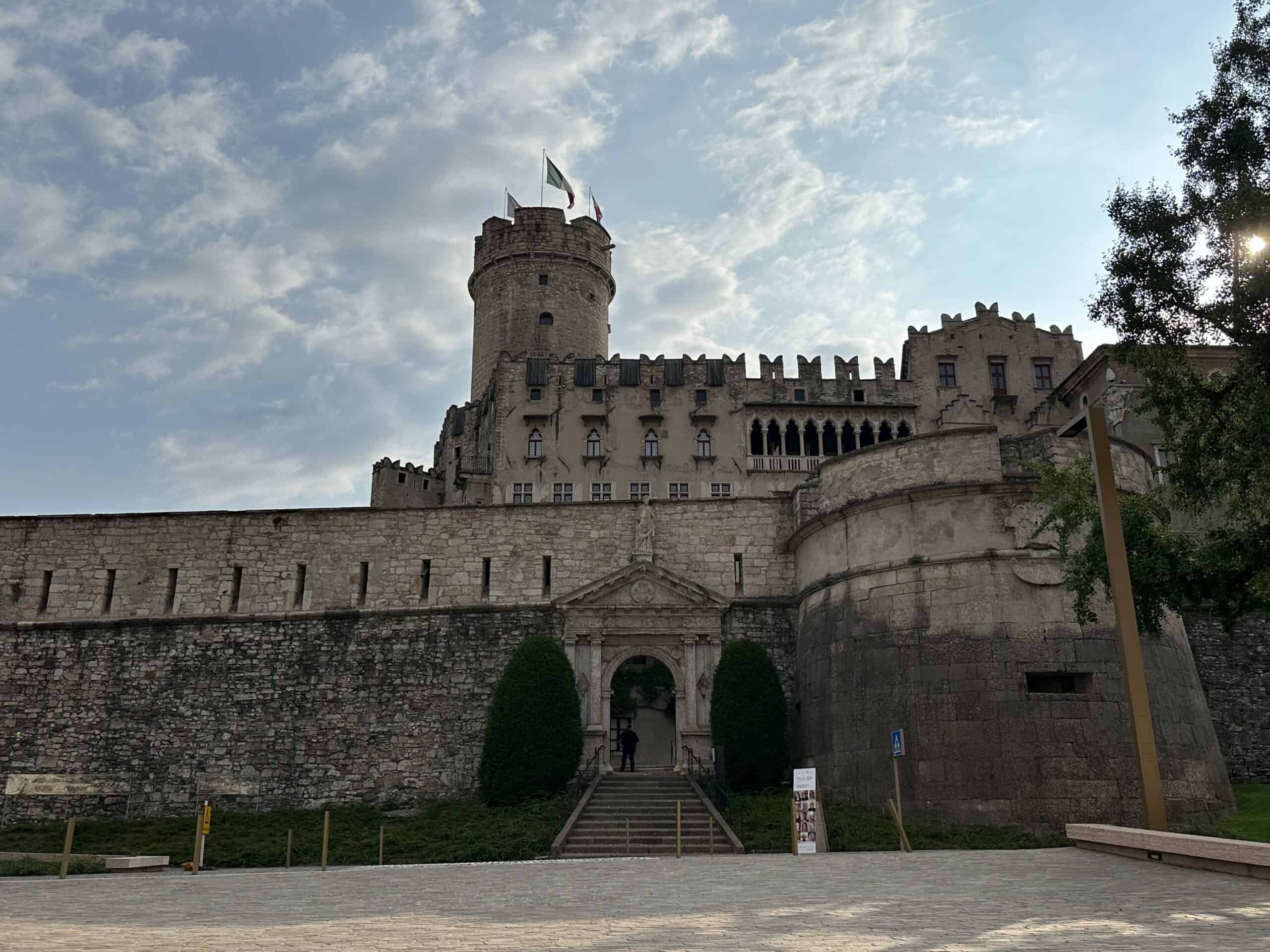
The Buonconsiglio Castle is the largest and most important monumental complex in the Trentino-Alto Adige region.
Built between 1239 and 1255, it was used as the residence of the prince-bishops of Trento until 1803.
The castle is made up of a set of different buildings dating back to different eras, surrounded by an imposing sixteenth-century wall.
It dominates the city from a small relief and stands on the remains of a Roman Castrum built for defensive purposes.
Once under its walls flowed the Adige River and the castle, built as an imperial fortress, presided over a strategic node on the North-South axis.
The original nucleus is Castelvecchio, a medieval fortress, then over time the prince-bishops incorporated and built other parts, such as the Torre dell’Aquila and the Magno Palazzo, one of the most sumptuous Renaissance residences in Italy.
In the rooms on the first floor of Castelvecchio there is the archaeological section, where Prehistory, the Roman age and the Early Middle Ages are illustrated, while in the Renaissance rooms paintings, bronzes, wooden sculptures are exhibited.
After the fall of the principality of Trento, the castle was used as a barracks.
Restored and reopened to the public in 1924 as the National Museum, since 1973 it has housed the ancient art collections of the Autonomous Province of Trento.
Inside the walls there is an Italian garden.
The history of the Buonconsiglio Castle is linked to the events of Cesare Battisti, Damiano Chiesa and Fabio Filzi. During the First World War, Cesare Battisti began an intense propaganda activity directly in Trento (at the time Austro-Hungarian territory) in favor of the intervention of the Kingdom of Italy against the Austro-Hungarian Empire in the war.
Cesare Battisti and Fabio Filzi from Rovereto were captured by the Austrians on Mount Corno, near Rovereto, on 10th July 1916. Recognized as imperial subjects, they were taken to Trento, where they were tried and sentenced to death on 12th July 1916 in the Fossa of the Buonconsiglio Castle. In the same place, on 19th May 1916, the death sentence was also passed for Damiano Chiesa (also an Austro-Hungarian imperial subject who enlisted in the Italian army).

































